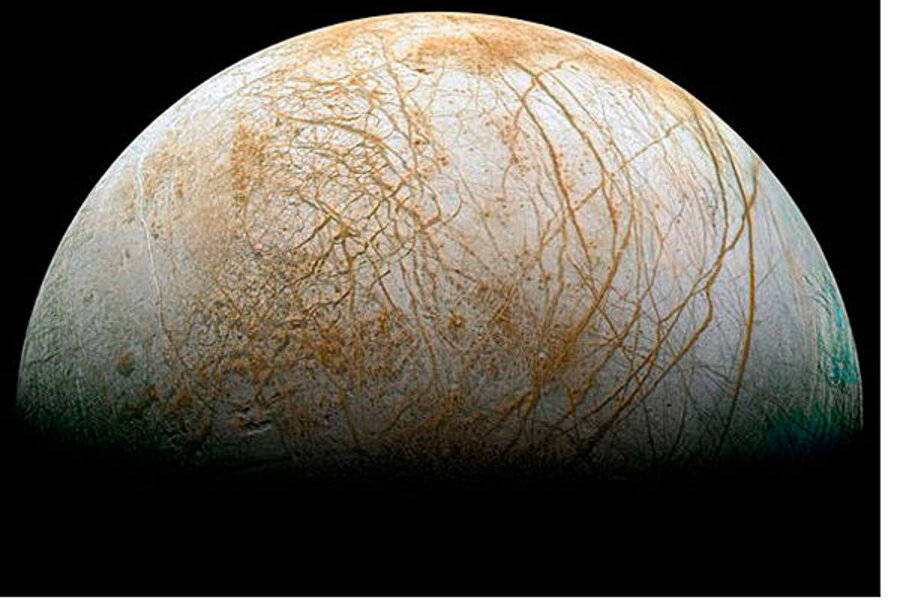Is it habitable? NASA outlines big goals for a mission to Europa.
Loading...
Europa, one of Jupiter’s moons, has long been fingered as possibly habitable. But sending a rover there to determine whether or not Europa has, had, or could have life is a mission that will require careful planning: Once there, what will that rover do? What equipment does it need? What do we, here on Earth, most want to know?
Those are the issues that NASA scientists tackle in a new paper published in the scientific journal Astrobiology, outlining the major questions that a future Europa rover will need to be equipped to answer.
“Europa is the most likely place in our solar system beyond Earth to have life today, and a landed mission would be the best way to search for signs of life,” said Robert Pappalardo, the study's lead author, based at NASA's Jet Propulsion Laboratory, in a release. “If one day humans send a robotic lander to the surface of Europa, we need to know what to look for and what tools it should carry.”
Most of what is known about Europa – one of Jupiter’s 67 known moons and one of that planet’s Galilean moons, named after their discoverer in 1610, Galileo Galilei – comes from probe fly-bys. Those probes include the Pioneer 10 in 1973, the Pioneer 11 in 1974, and the two Voyager probes in 1979, on their way through past the planets in pursuit of the solar system’s doorstep. The probe that spent the most time out near Jupiter, the Galileo probe in orbit around the planet from 1995 to 2003, took the most detailed portraits to date of that moon.
Based on information pieced together from those fly-bys, scientists believe that Europa, which is just smaller than Earth’s moon, might have a vast, liquid ocean tucked under an ice-covered surface. And even more intriguing to scientists are the brownish-red lines sketched over the moon: scientists have proposed that the red patches could indicate ocean water welling up in cracks in the moon’s surface – water that, scientists have said, could be a possible venue for microbial life.
But, at this point, all that is still unknown, and NASA is hoping to land a rover there that will do for Europa what Mars rovers have done for the Red Planet, sending home to Earth surface accounts of the moon.
The paper identifies assessing the potential habitability of the moon as the top priority for the mission. That would include drawing samples from at least two different depths of the surface to determine whether or not the planet has liquid water, and whether or not it has the chemical compounds needed to build and support life.
“A future landed mission to Europa would offer a unique opportunity to sample and observe the surface, directly addressing the goal of understanding Europa's habitability by confirming the existence and determining the characteristics of water within and below Europa's icy shell and evaluating the processes that have affected Europa,” write the scientists in the paper.






